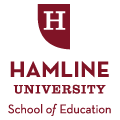Term
Summer 2020
Capstone
Capstone Project
Degree Name
MAESL
Facilitator(s)
Trish Harvey
Content Expert
Andrew Parker
Abstract
We are surrounded by many forms of language every day. This capstone project addresses the research question: how can students learn to research and think critically about the linguistic landscape in and around their school and come up with ideas to create changes in the linguistic landscape of their school? The linguistic landscape (LL) of a neighborhood, of a village, or of an entire city is what we see when we interact with the world: this includes signage such as billboards, signs, advertisements, even the menu scrawled on a chalkboard at the local coffee shop. The languages that are present (or not present) on the signage of an area, how those languages are represented, and to whom the different types of signage are meant to appeal are all factors that make up the LL of a certain neighborhood, village, or city. Focusing specifically on schools, students themselves can be involved in examining the LLs in their lives. Students can be taught how to look critically at the LLs around them. The aim of this capstone project is to help students learn to analyze their linguistic surroundings more closely so that they can realize inequities that may exist and make changes to those surroundings that will benefit themselves, their fellow students, family members, and even community members who visit their school. This project is a three-week curricular unit intended for use at the middle school level. Positive changes made to the LL in a school can have a lasting impact on students’ linguistic and cultural identities resulting in a more equitable school environment.
Project Type
Curriculum
Keywords
Curriculum, ESL/ ELLs, Multicultural Education, Linguistic Landscapes
Recommended Citation
Bullock, Suzanne Regina Buresh, "Teaching and Learning About Linguistic Landscapes in Schools: A Student-Involved Research and Analysis Curriculum for English Language Learners in Middle School" (2020). School of Education and Leadership Student Capstone Projects. 565.
https://digitalcommons.hamline.edu/hse_cp/565
dc_type
text
dc_publisher
DigitalCommons@Hamline
dc_format
application/pdf
dc_source
School of Education Student Capstone Projects

